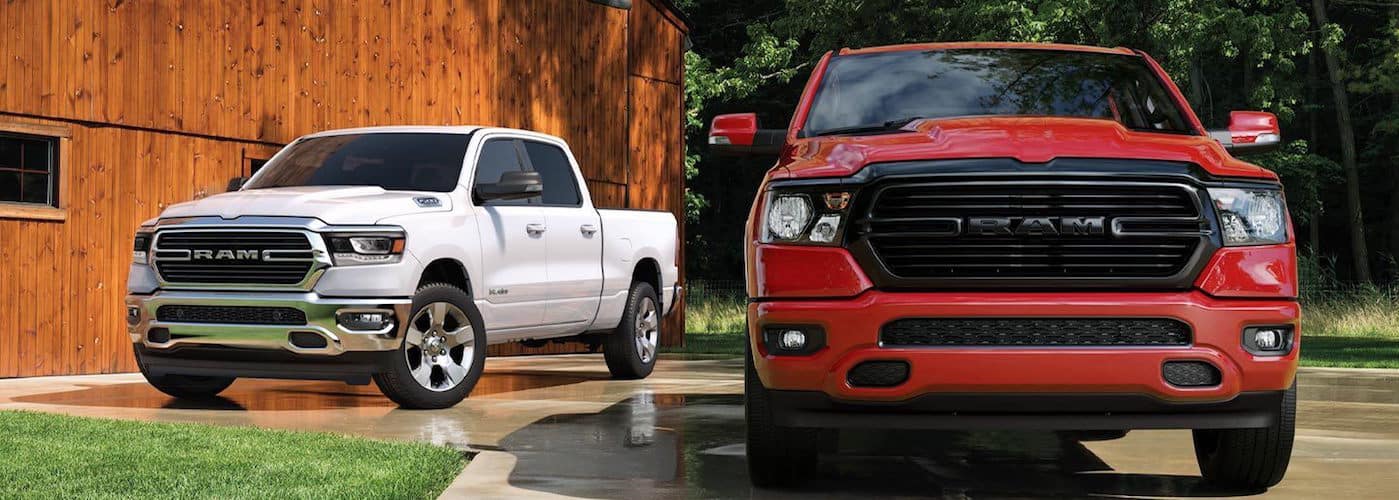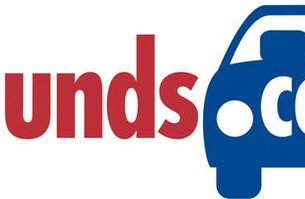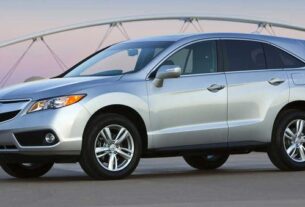When it comes to buying a truck, one of the most important decisions you’ll have to make is the type of cab you need. From crew cabs to quad cabs to king cabs, the options can be a bit overwhelming. In this detailed blog post, we’ll explore the differences between these popular truck cab configurations and help you determine which one is the best fit for your needs.
- California’s Southern Region Is Home to the Largest Car Dealership in the World
- Comparing Crew Cab, Quad Cab, and King Cab Key Differences
- Unimpressed by technology? Edmunds.com has your car
- 2024 Ford Bronco Sport A Comprehensive Guide for Chicago Residents
- 2021 Honda Passport Review Rugged SUV with Ample Space
Choosing the Right Cab Size for Your Truck

The cab size of a truck is a crucial consideration when making a purchase. The cab size not only affects the seating capacity and interior space but also impacts the overall size, weight, and performance of the vehicle. Understanding the differences between the various cab configurations can help you make an informed decision and ensure you get the truck that’s perfectly suited for your lifestyle and needs.
You are watching: Crew Cab vs. Quad Cab vs. King Cab: What’s the Difference?
The Four Main Types of Truck Cabs
The four most common types of truck cabs are:
- Regular Cab: The classic, single-row cab design with seating for two or three passengers.
- Extended Cab: Also known as “access cab” or “extended cab,” this configuration offers a small, second row of seating behind the front seats.
- Quad Cab: Featuring a full-size, four-door cab with seating for up to six passengers.
- Crew Cab: The largest cab option, offering a spacious, four-door design with ample room for up to six or even six passengers.
Each of these cab configurations has its own unique advantages and drawbacks, which we’ll dive into in the following sections.
Truck Cab Configurations Explained
Regular Cab
The regular cab is the most basic and compact cab option for trucks. It features a single row of seating, typically for two or three passengers. This configuration is often the lightest and most maneuverable of the bunch, making it a popular choice for work trucks, construction vehicles, and other applications where a smaller, more nimble cab is preferred.
Regular cabs are known for their simplicity, accessibility, and often lower price points compared to the larger cab options. They’re a great choice for those who don’t need extensive passenger space and prioritize factors like fuel efficiency, payload capacity, and maneuverability.
Extended Cab
The extended cab, also known as the “access cab” or “extended cab,” is a step up from the regular cab in terms of interior space and seating capacity. This configuration features a small, second row of seating behind the front seats, allowing for the accommodation of up to four or five passengers.
Extended cabs offer more versatility than regular cabs, providing a bit more room for passengers, cargo, or a combination of both. They’re often a popular choice for those who need occasional extra seating but don’t require the full-size cabin of a crew cab.
Quad Cab
The quad cab is a full-size, four-door cab design that offers seating for up to six passengers. This configuration provides a spacious, comfortable interior with ample room for both passengers and cargo.
Quad cabs are a popular choice for families, recreational enthusiasts, and those who need to transport a crew of workers or large items regularly. They offer a comfortable, user-friendly cabin while still maintaining a relatively compact exterior footprint compared to the even larger crew cab.
Crew Cab
The crew cab is the largest and most spacious cab option for trucks. Featuring a four-door design and a full-size cabin, crew cabs can comfortably accommodate up to six or even six passengers, depending on the model.
Crew cabs are known for their generous interior space, comfortable seating, and exceptional versatility. They’re a great choice for families, contractors, or anyone who needs to transport a larger group of people and their belongings.
Crew Cab vs. Quad Cab vs. King Cab: Which Is Right for Me?

Now that you have a basic understanding of the different truck cab configurations, let’s dive deeper into the key differences between crew cabs, quad cabs, and king cabs to help you determine which one is the best fit for your needs.
Comparing Cabin Space and Seating
One of the most significant differences between these cab configurations is the amount of interior space and seating capacity they offer.
Crew Cab:
- Largest cab size, featuring a full-size, four-door design
- Offers the most cabin space and the most comfortable seating for up to six or even six passengers
- Provides the most legroom and headroom for rear-seat passengers
Quad Cab:
- Also a full-size, four-door cab design
- Offers ample cabin space and seating for up to six passengers, with a slightly smaller rear-seat area compared to the crew cab
- Provides a good balance of passenger comfort and cargo space
King Cab:
- Features a larger, four-door cab design compared to the extended cab
- Offers more interior space and seating for up to five or six passengers, depending on the model
- Provides a more spacious cabin than the extended cab, but not as much as the crew cab or quad cab
When it comes to cabin space and seating, the crew cab is the clear winner, offering the most comfortable and spacious accommodations for passengers. The quad cab and king cab fall somewhere in the middle, providing a good balance of passenger and cargo capacity.
Hauling Capacity and Tow Ratings
The cab size of a truck can also impact its hauling and towing capabilities. Generally, the larger the cab, the less overall payload and towing capacity the truck will have.
Crew Cab:
- Typically has the lowest payload and towing capacity among the three cab configurations
- This is due to the increased weight and size of the larger cab
- Payload and tow ratings may be reduced by several hundred pounds compared to regular or extended cab models
Quad Cab:
- Offers a better balance between passenger capacity and hauling/towing ability
- Payload and tow ratings are generally higher than crew cab models, but lower than regular or extended cab versions
King Cab:
- Provides a middle ground between the compact regular/extended cab and the larger crew cab
- Payload and towing capacities are often higher than the crew cab but lower than the regular or extended cab
When prioritizing hauling and towing capabilities, the regular or extended cab configurations are typically the best choice, as they offer the highest payload and towing ratings. However, the quad cab and king cab can still provide impressive capabilities, making them viable options for those who need a balance of passenger space and hauling/towing performance.
Extended Cab vs. Crew Cab: Which Is More Versatile?
The extended cab and crew cab configurations offer different levels of versatility, each with its own advantages.
Extended Cab:
- Provides a good compromise between passenger space and cargo capacity
- The smaller, second-row seating area can be used for occasional passengers or as additional storage space
- Typically offers a longer cargo bed compared to crew cab models, allowing for more hauling capacity
Crew Cab:
- Offers the most spacious and comfortable interior for passengers
- The full-size, four-door design provides easy access and ample legroom for rear-seat occupants
- While the cargo bed may be slightly shorter than the extended cab, the crew cab still offers a significant amount of storage space
Ultimately, the choice between an extended cab and a crew cab depends on your specific needs and priorities. If you frequently transport a full crew of passengers and need the most comfortable and spacious cabin, the crew cab is the better option. However, if you need to balance passenger seating with cargo-hauling capabilities, the extended cab may be the more versatile choice.
Factors to Consider When Choosing a Truck Cab

When deciding on the right truck cab configuration for your needs, there are several key factors to consider:
Passenger Capacity
Determine how many passengers you’ll need to transport on a regular basis. If you have a larger family or often transport a crew of workers, a crew cab or quad cab may be the better choice. For more occasional passenger needs, an extended cab or even a regular cab may suffice.
Cargo and Hauling Requirements
Consider the types of items and the overall volume of cargo you’ll need to transport. Crew cabs generally have shorter cargo beds, while extended cabs and regular cabs offer more bed length for hauling larger items.
Towing and Payload Capacity
See more : Toyota, Acura have best resale values, Edmunds.com says
If you plan to use your truck for heavy-duty towing or hauling, pay close attention to the payload and towing ratings, as larger cab configurations can reduce these capabilities.
Maneuverability and Parking
Smaller cab sizes, such as regular and extended cabs, tend to be more maneuverable and easier to park in tight spaces compared to the larger crew and quad cabs.
Fuel Efficiency
Truck cab size can also impact fuel efficiency, with smaller cabs generally offering better gas mileage due to their reduced weight and aerodynamic profile.
Personal Preference and Driving Needs
Ultimately, your personal preferences and driving needs should play a significant role in your decision. Consider how you plan to use your truck and choose the cab configuration that best fits your lifestyle and requirements.
The Pros and Cons of Different Truck Cab Sizes
To help you make an informed decision, let’s take a closer look at the pros and cons of each truck cab configuration:
Regular Cab
Pros:
- Lightest and most maneuverable cab option
- Offers the highest payload and towing capacities
- Often the most affordable cab configuration
Cons:
- Limited passenger seating capacity (typically 2-3 people)
- Least amount of interior space and storage
Extended Cab
Pros:
- Provides additional passenger seating and storage space compared to regular cab
- Offers a good balance of passenger capacity and cargo hauling
- Typically has a longer cargo bed than crew cab models
Cons:
- Rear-seat area is smaller and less comfortable than crew cab
- Reduced payload and towing capacities compared to regular cab
Quad Cab
Pros:
- Spacious, full-size four-door design
- Comfortably seats up to six passengers
- Provides a good compromise between passenger space and cargo capacity
Cons:
- Slightly less interior space and cargo bed length than crew cab
- Reduced payload and towing capacities compared to regular and extended cabs
Crew Cab
Pros:
- Largest and most spacious cab configuration
- Offers the most comfortable and roomy seating for up to six or six passengers
- Provides easy access and ample legroom for rear-seat occupants
Cons:
- Typically has the lowest payload and towing capacities among the cab options
- Cargo bed length is shorter than extended cab models
- Generally the most expensive cab configuration
Conclusion
Choosing the right truck cab configuration is a critical decision that can significantly impact the functionality, comfort, and overall performance of your vehicle. By understanding the differences between crew cabs, quad cabs, and king cabs, you can make an informed choice that best suits your specific needs and preferences.
Whether you prioritize passenger space, cargo hauling, towing capacity, or a combination of these factors, there’s a truck cab option that can meet your requirements. Take the time to carefully consider your driving needs, budget, and personal preferences to ensure you select the perfect truck cab for your lifestyle.
By weighing the pros and cons of each cab configuration and understanding the key differences, you’ll be well on your way to finding the ideal truck to meet your unique needs. Happy shopping!
Source: https://us.congthucvatly.com
Category: Car


